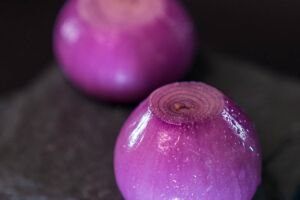Discover the fascinating process of how honey is made by bees and learn about the health benefits of this natural sweetener. Explore the versatility of honey as an ingredient in various recipes.
What Are The Health Benefits of Honey?
Honey has been used for centuries as a natural sweetener and remedy for various ailments. This golden liquid, produced by bees from the nectar of flowers, is not only delicious but also packed with numerous health benefits.
1. Boosts Immunity: Honey is known for its antibacterial and antiviral properties, which can help strengthen the immune system. It also contains antioxidants that protect the body against free radicals, reducing the risk of chronic diseases.
2. Soothes Sore Throats: Honey is a popular home remedy for soothing sore throats. Its antimicrobial properties can help kill bacteria and reduce inflammation. Mix a spoonful of honey with warm water or herbal tea for relief.
3. Aids Digestion: Consuming honey can promote better digestion. It stimulates the production of enzymes that improve nutrient absorption and helps relieve constipation. It can also soothe an upset stomach and reduce acid reflux.
4. Provides Energy: Honey is a natural source of carbohydrates, making it an excellent energy booster. Its glucose content is quickly absorbed by the body, providing an instant energy boost without the crash that comes with processed sugars.
5. Improves Sleep: Honey can help improve sleep quality. It contains natural sugars that raise insulin levels slightly, allowing tryptophan (an amino acid) to enter the brain more easily. Tryptophan is then converted into serotonin, which promotes relaxation and better sleep.
6. Promotes Wound Healing: Honey has been used for centuries to treat wounds and burns. It has antibacterial properties that can help prevent infections and promote healing. Apply a thin layer of honey to minor cuts or burns for faster recovery.
7. Supports Weight Management: Contrary to popular belief, honey can actually support weight management when consumed in moderation. Its natural sweetness can satisfy cravings, and its low glycemic index prevents blood sugar spikes.
8. Enhances Skin Health: Honey has moisturizing and antibacterial properties that can improve skin health. It can help soothe dry, irritated skin, reduce acne, and promote a youthful complexion. Apply a honey mask or use honey as a natural cleanser.
9. Relieves Allergies: Consuming locally sourced honey can help relieve seasonal allergies. It contains traces of pollen from local plants, which can desensitize the body to allergens and reduce allergy symptoms.
10. Supports Heart Health: Regular consumption of honey has been linked to improved heart health. It can help lower bad cholesterol levels, reduce inflammation, and promote overall cardiovascular health.
Incorporating honey into your diet is a simple and delicious way to reap these health benefits. However, it’s important to choose raw, organic honey whenever possible, as processed honey may lose some of its beneficial properties during production.
What Is Honey?
Honey is a natural sweetener that has been enjoyed by humans for centuries. It is a thick, golden liquid that is produced by bees using nectar from flowers. The process of making honey begins when bees collect nectar from flowers using their long tongues. They store the nectar in their honey stomachs and return to the hive.

Once back at the hive, the bees pass the nectar to other worker bees through regurgitation. These bees then chew the nectar and add enzymes to it. The enzymes break down the complex sugars in the nectar into simpler sugars, making it easier to digest.
The bees then spread the nectar onto the honeycomb cells. The bees fan their wings over the cells, causing the water in the nectar to evaporate. This thickens the nectar into honey. Once the honey is ready, the bees seal the cells with wax to protect it.
Honey is not only delicious but also has numerous health benefits. It is rich in antioxidants, which help protect the body from damage caused by free radicals. Honey also has antibacterial properties and can be used to treat wounds and infections.
In addition to its health benefits, honey is a versatile ingredient that can be used in various recipes. It can be drizzled over pancakes, added to tea or yogurt, or used as a natural sweetener in baking.
So the next time you enjoy a spoonful of honey, remember the hard work and natural processes that go into producing this golden nectar. Nature’s sweet gift to us!
What Is Honey Made From?

Nutritional Contents of Honey
| Nutrient | Amount per 100g of Honey |
|---|---|
| Calories | 304 kcal |
| Carbohydrates | 82.4 g |
| Sugars (glucose, fructose) | 82.1 g |
| Protein | 0.3 g |
| Fat | 0 g |
| Vitamin C | 0.5 mg (1% DV) |
| Calcium | 6 mg (1% DV) |
| Iron | 0.4 mg (2% DV) |
| Zinc | 0.2 mg (1% DV) |
| Selenium | 0.8 µg (1% DV) |
| Copper | 0.04 mg (2% DV) |
(Note: DV (Daily Value) percentages are based on a 2000-calorie diet. Please keep in mind that these values can vary slightly based on the type of honey and its source.)
What Are The Types of Honey?

- Wildflower Honey:
- Description: Wildflower honey is made by bees that collect nectar from a variety of wildflowers. It has a robust, full-bodied flavor and a dark amber color. The taste can vary based on the types of flowers in the area.
- Usage: Its strong flavor makes it ideal for baking, marinades, and glazes.
- Clover Honey:
- Description: Clover honey is sourced primarily from the nectar of clover blossoms. It has a light, sweet, and mild flavor with a clear golden color.
- Usage: Due to its pleasant taste, it’s often used as a table honey, in dressings, and desserts.
- Manuka Honey:
- Description: Manuka honey originates from the nectar of the Manuka tree in New Zealand. It has a rich, earthy taste with a slightly bitter undertone. What sets it apart is its strong antibacterial properties.
- Usage: Known for its medicinal qualities, Manuka honey is used for wound healing, skincare, and overall health.
- Acacia Honey:
- Description: Acacia honey is light in color and has a mild, floral flavor. It’s one of the lightest and sweetest honey varieties available.
- Usage: Acacia honey is perfect for drizzling over desserts, adding to tea, or using in salad dressings due to its mild taste.
- Lavender Honey:
- Description: Lavender honey is made from the nectar of lavender flowers. It has a delicate, floral aroma and a subtle lavender taste.
- Usage: Its unique flavor makes it an excellent choice for pairing with cheeses, spreading on toast, or incorporating into desserts.
- Buckwheat Honey:
- Description: Buckwheat honey is dark and robust, with a strong, molasses-like flavor. It’s high in antioxidants and minerals.
- Usage: Its intense flavor makes it suitable for marinades, barbecue sauces, and hearty baked goods.
- Orange Blossom Honey:
- Description: Orange blossom honey comes from the nectar of orange blossoms. It has a citrusy aroma and a mild, sweet taste with hints of orange.
- Usage: This honey is great for glazes, vinaigrettes, and desserts, adding a subtle citrus twist to dishes.
Each type of honey offers a distinct taste experience, allowing for versatile culinary uses and potential health benefits based on its unique composition.
What is Infused Honey?
How Infused Honey is Made:
Infused honey is made by placing the desired infusion ingredients in a container and covering them with honey. The mixture is then allowed to sit for a period of time, typically ranging from a few days to a few weeks, depending on the desired intensity of flavor. During this time, the honey absorbs the flavors and aromas of the added ingredients, creating a distinct taste profile.
Common Infusion Ingredients:
- Herbs: Herbs like rosemary, thyme, lavender, or mint can impart a fresh and herbal note to honey.
- Spices: Spices such as cinnamon sticks, cloves, or vanilla beans add warmth and complexity to infused honey.
- Fruits: Fruits like lemon, orange, or berries contribute a fruity and tangy flavor, enhancing the honey’s natural sweetness.
- Edible Flowers: Flowers like chamomile, jasmine, or elderflowers can add a subtle floral aroma and taste to the honey.
- Chilies: Infusing honey with chili peppers creates a sweet and spicy condiment, popular in various cuisines.
Uses of Infused Honey:
Infused honey is incredibly versatile and can be used in a variety of ways:
- Culinary Delights: Infused honey can be drizzled over desserts, pancakes, or yogurt, adding a unique flavor twist.
- Beverages: It can be stirred into tea, cocktails, or hot water, creating aromatic and flavorful beverages.
- Marinades and Sauces: Infused honey makes excellent marinades for meat, especially poultry, and adds depth to sauces and dressings.
- Cheese Pairings: Infused honey complements various cheeses, creating a balanced and sophisticated cheese board experience.
- Health and Wellness: Some infused honeys, like ginger-infused honey, are used in traditional medicine for their potential health benefits.
Infused honey not only elevates the taste of dishes but also adds a gourmet touch to culinary creations. Its versatility makes it a popular choice among chefs and home cooks alike, offering endless opportunities to experiment with flavors in the kitchen.
What Are The Difference Between Raw Honey and Processed Honey?
Here’s a comparison between raw honey and processed honey presented below:
| Aspect | Raw Honey | Processed Honey |
|---|---|---|
| Source | Directly from the beehive, unprocessed and pure. | Heated and filtered to remove impurities and improve shelf life. |
| Processing | Minimal processing; not heated above natural hive temperature (~95°F or 35°C). | Heated and pasteurized at higher temperatures, up to 160°F (71°C). |
| Texture | Thick and may crystallize over time. | Smooth and consistent texture; less likely to crystallize. |
| Color | Color varies based on floral source and may be cloudy. | Clear and transparent, often with a golden hue. |
| Flavor | Distinctive and rich, reflecting its floral source. | Uniform taste, lacking the unique floral notes of raw honey. |
| Nutritional Value | Higher levels of enzymes, antioxidants, and pollen. | Some beneficial compounds may be lost due to heating. |
| Crystallization | Prone to crystallization due to natural sugars. | Less likely to crystallize due to heating and filtration. |
| Additives | No additives; pure honey. | May contain additives like corn syrup or high fructose corn syrup for sweetness. |
| Health Benefits | Contains natural enzymes and antioxidants, believed to offer various health benefits. | Some health benefits may be reduced due to processing. |
| Price | Generally more expensive due to its natural state. | Typically more affordable due to mass production methods. |
Note: The exact characteristics of raw and processed honey can vary based on the specific processing methods used by manufacturers.
Difference Between Filtered Honey vs. Unfiltered Honey?
| Aspect | Filtered Honey | Unfiltered Honey |
|---|---|---|
| Processing | Filtered through fine mesh or cheesecloth to remove impurities such as bee parts and wax residues. | Not filtered; retains all the natural particles like pollen, propolis, and beeswax. |
| Texture | Smooth and clear, without visible particles. | May contain visible specks, grains, and cloudiness due to natural components. |
| Color | Clear and transparent. | Color may vary from light to dark, depending on floral source, and may be cloudy. |
| Flavor | Mild and uniform; lacks the unique taste of raw honey. | Rich, varied taste profile influenced by the source of nectar. |
| Nutritional Value | May have slightly reduced nutritional content due to the filtration process. | Contains all the natural nutrients, including pollen and enzymes, providing potential health benefits. |
| Crystallization | Less likely to crystallize due to the removal of impurities. | More likely to crystallize over time due to the presence of natural particles. |
| Usage | Preferred for culinary uses where a clear appearance is desired, such as in baking and dressings. | Valued by health enthusiasts and those seeking natural, unprocessed products. Often used for medicinal purposes and as a natural sweetener. |
| Health Benefits | Retains some beneficial compounds but may lack certain elements found in unfiltered honey. | Contains all natural components, potentially offering a wider range of health benefits. |
| Price | Generally more affordable due to mass production and lower processing costs. | Often more expensive due to its natural state and the demand for its health benefits. |
Note: The characteristics of filtered and unfiltered honey can vary based on the specific filtration methods and the source of honey.
What Are The Minerals Found In Honey?
| Mineral | Amount per 100g of Honey |
|---|---|
| Potassium | 52 mg |
| Calcium | 6 mg |
| Phosphorus | 4 mg |
| Magnesium | 2 mg |
| Sodium | < 2 mg |
| Iron | 0.4 mg |
Please note that these values are approximate and can vary based on the specific type and source of honey.
What are The side effects of Honey?
While honey is generally considered safe for most people when consumed in moderate amounts, there are a few potential side effects to be aware of:
- Allergic Reactions: Some individuals may be allergic to honey, experiencing symptoms such as itching, swelling, hives, or even anaphylaxis. If you have pollen allergies, you might be more prone to honey allergies.
- Infant Botulism: Honey should not be given to infants under the age of one. It can contain spores of Clostridium botulinum bacteria, which can lead to a rare but serious illness called infant botulism in babies.
- Increase in Blood Sugar: Honey is high in natural sugars, so consuming large amounts can lead to a rapid increase in blood sugar levels, especially in individuals with diabetes.
- Weight Gain: Like any sugary food, excessive consumption of honey can contribute to weight gain and obesity if not consumed in moderation.
- Tooth Decay: Honey is high in sugar and acidic, which can contribute to tooth decay if proper oral hygiene is not maintained.
- Digestive Issues: In rare cases, consuming too much honey can lead to digestive issues such as diarrhea or stomach discomfort, especially if taken on an empty stomach.
- Interference with Certain Medical Conditions: Honey might interfere with certain medical conditions or medications, especially if you are on a low-sugar or low-carb diet or if you are taking medications that affect blood sugar levels.
It’s important to note that these side effects are usually associated with excessive or improper consumption of honey. For most people, moderate consumption of honey as part of a balanced diet is generally safe and can offer various health benefits. If you have specific concerns or health conditions, it’s advisable to consult a healthcare professional before making significant changes to your diet.
How to Identify Fake Honey?
Identifying fake or adulterated honey can be challenging, but there are a few methods you can use to help determine its authenticity:
- Purity Test:
- Water Test: Real honey does not mix easily with water. Place a tablespoon of honey in a glass of water. If it dissolves quickly, it may be adulterated.
- Thumb Test: Put a small drop of honey on your thumb. If it spreads or spills, it may contain added water or other substances.
- Texture and Consistency:
- Real honey is typically thick and not very runny. If the honey you have is overly watery, it might be diluted.
- Caramelization:
- Heat Test: Real honey caramelizes when exposed to heat. Dip a matchstick in honey and light it. If it burns, it’s likely pure honey. Fake honey might not burn or burn with a plastic-like smell.
- Crystallization:
- Natural Process: Over time, real honey crystallizes, becoming thicker and grainy. If the honey you have stays in a liquid state for an unusually long time, it might be adulterated.
- Read Labels:
- Check the label for any added ingredients. Pure honey should contain only one ingredient: honey. Avoid honey that lists additional sugars or high-fructose corn syrup.
- Source and Reputation:
- Buy honey from reputable sources, local beekeepers, or trusted brands. Counterfeit honey is less likely to come from reliable sources.
- Price and Transparency:
- Be cautious if the price seems too good to be true. Pure honey, especially from specific floral sources like Manuka, tends to be more expensive. Also, transparent packaging allows you to inspect the honey’s color and consistency.
- Crystallization Pattern:
- Pure honey tends to have a specific pattern when it crystallizes, depending on its source. While this method requires experience, experienced beekeepers can often identify genuine honey by its crystallization patterns.
(Remember that these methods are not foolproof, especially for someone without specialized knowledge. If you’re unsure about the authenticity of your honey, it’s best to buy from reputable sources and local beekeepers you trust.)
Conclusion
Honey isn’t merely a sweet treat; it’s a remarkable gift from nature, offering a harmonious blend of taste and health. From its healing properties to its diverse flavors, honey continues to captivate hearts worldwide. So, the next time you savor a spoonful of this golden elixir, remember the intricate marvel it represents in the tapestry of nature.
Let’s celebrate honey – a testament to nature’s brilliance, sweetness, and healing prowess.
















